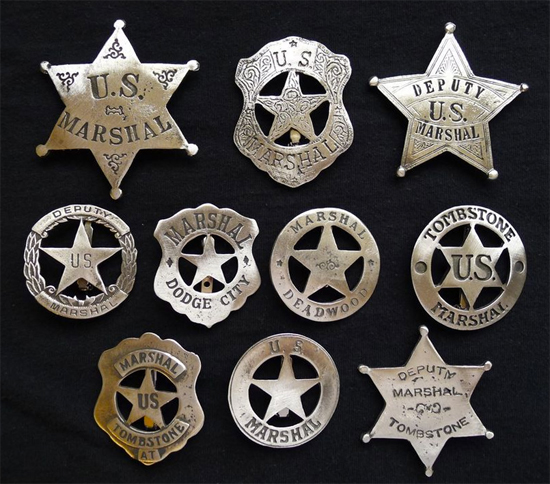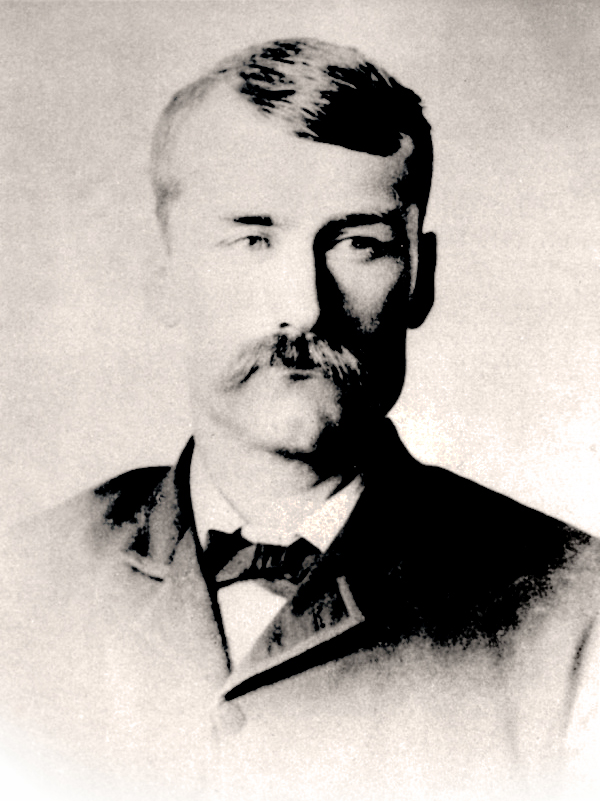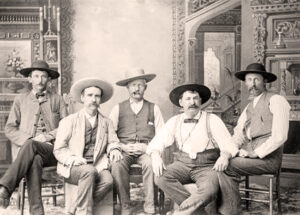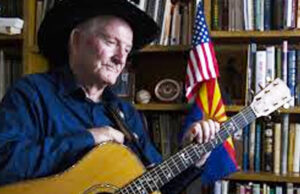Lawmen of the Old West – Jim Roberts of Arizona
May 26, 2023
Often, the only discernible difference between an enforcer of the law and a gun-toting outlaw in the Old West was the badge on their chest … a sign that he represented law and order “in these here parts.”
There is no shortage of written records regarding the Lawmen of the Old West. This Wikipedia page has quite a collection of everyone from John Hicks Adams to Jefferson “Keno” Wilson.
Legends of America also has an extensive summary Old West Lawmen … well worth taking the time to review.
During the 70 years or so of the wild and “lawless” period known as the Old West, the “Law” was spread pretty thin and was generally divided up into three levels: Deputy U.S. Marshals, the county sheriff or town marshals (often referred to as constables). Even gun toting citizens got into the act when it was ruled by the Supreme Court in 1873 that “Bounty Hunters” were technically a part of the U.S. law enforcement system, as the Supreme Court decision, which has never been revoked, in “Taylor v. Taintor” concluded:
Montana bounty hunters circa 1870 photo by Evelyn Cameron (August 26, 1868 – December 26, 1928), a photographer and diarist of the American West.
Taylor v. Taintor, 83 U.S. (16 Wall.) 366 (1872), was a United States Supreme Court case. It is commonly credited as having decided that a person to whom a suspect is remanded, such as a bail bondsman, has sweeping rights to recover the suspect.
When the bail is given, the principal is regarded as delivered to the custody of his sureties. Their domain is a continuance of the original imprisonment.
Whenever they choose to do so, they may seize him and deliver him up to his discharge; and if it cannot be done at once, they may imprison him until it can be done.
They may exercise their rights in person or by agent. They may pursue him into another state; may arrest him on the Sabbath; and if necessary, may break and enter his house for that purpose.
The seizure is not made by virtue of due process. None is needed. It is likened to the arrest by the sheriff of an escaped prisoner.
This era of American history saw the roles of lawmen and lawbreakers alike being filled by many who had developed certain “gun handling” skills, particularly survivors of the Civil War who had returned home to find no family and few job opportunities. These were the folks who came to be known as “Gunfighters” and they would find their way into upholding the law or breaking the law, often playing a dual role of one OR the other during their lifetime.
This article by Marshall Trimble*, Arizona’s Official state historian, in the Arizona Republic relates how some of the “tales” of these gunfighters thrust them into legendary status.
Marshall Trimble – In addition to his position as director of Southwest studies at Scottsdale Community College, Marshall Trimble is a popular speaker and True West Magazine’s question-and-answer man.
Americans have a natural hunger for a heroic past. People need heroes and if they don’t have ’em they make ’em up, even if it means romanticizing outlaws in order to create legends.
Arizona had an abundance of the real deal. Some have been overrated and exaggerated while others have managed to stay under history’s radar. They’ve been called Arizona’s rendition of King Arthur’s Knights of the Round Table.
Why do these outlaws and gunfighters continue to hold our fascination? Maybe it’s because they take us outside of ourselves and enable us to escape our mundane daily lives.
We’re drawn to them because we admire free-spirited rebels who weren’t afraid to challenge the establishment. We venerate those who dare to live on the edge.
In some ways they represent the manifestation of those traits that made America great: independence, self-reliance, resourcefulness, toughness and dauntless courage. They were a huge myth with a whole lot of reality thrown in.
That road to legendary gunfighter status would also be one or a series of events that launched an individual into history’s limelight that they would otherwise not have chosen. This is likely the case with “Uncle Jim” Roberts who, in 1887, was busy homesteading and raising horses near Tonto Creek in central Arizona when his road to legend started. After one of his prize stallions was stolen, his reputation for being more than just a little handy with a gun was pretty much set in stone. What followed became known ironically as the Pleasant Valley War, a feud over cattle and horse rustling that left an unknown number of men in shallow graves from the business end of Jim Roberts’ Colt single action revolver. This twist of fate became even more intriguing as Roberts would soon become one of the Old West’s most iconic lawmen.

Jim Roberts. In 1892, Jim was elected Constable in the (then) wild and crazy copper mining town of Jerome, AZ., then later elected town marshall in 1904. He also spent time as a lawman in Bisbee, Douglass and the Tombstone areas, before returning to Clarkdale…where he eventually ‘retired’, and went to work for the United Verde Copper Company as a Special Officer, holding a Yavapai County Deputy Sheriff commission.”
This post from Dispatches from Arizona offers some additional insight into Jim Roberts … Gunfighter and Lawman.
Jim Roberts took his last job as a lawman in the town of Clarkdale in 1927. He was 69 years old. He was a quiet man who didn’t drink or play cards. He never talked about his involvement in the Pleasant Valley War, and didn’t brag about his exploits as a lawman. A film company offered to pay him for his story; but he refused the offer.
More from Marshall Trimble in True West Magazine…
During the Roaring Twenties there was still one old gunfighter left packing a gun and a badge. His name was Jim Roberts and he was nearly 70 years and walked with a stoop but he was still the real deal. He was the law in the mining town of Clarkdale, Arizona and he was known affectionately as “Uncle Jim.”
Old timers remembered Jim Roberts as the top gun in the notorious Pleasant Valley War between the Grahams and Tewksbury’s. Historians claim as many as fifty men died with their boots on in the feud that lasted several years.
By the late 1880s most of the leaders in the feud were dead. Among the living was Jim Roberts. The fighting men on both sides who survived were charged with murder but interestingly, none were ever brought to trial. For one reason or another witnesses for the prosecution had a way of not showing up in court.
Overnight, Jim Roberts went from being a wanted man to a respected lawman. A gunfighter with his reputation and skill with firearms was much sought-after by sheriffs and civic leaders wanting to bring law and order to their counties and communities. He lived up to his reputation, taming some of the toughest towns in Arizona.
This Facebook page of the Yavapai County Constable in Prescott, Arizona, tells of Jim’s final gunfight … a fitting tale marking the capstone of a truly legendary lawman.
On Thursday, June 21, 1928, a 68 year old Deputy Jim Roberts was walking a foot beat in downtown Clarkdale. Two criminals out of Oklahoma concocted a plan to rob the Bank of Arizona at Clarkdale that day. They were in possession of a stolen car out of Phoenix for their getaway. The bank had the United Verde mine payroll ready for the next day’s paychecks. The outlaw pair parked their stolen vehicle in front of the bank, while the two robbers entered with firearms.
The robbers put all the bank employees in the vault, and collected a gunny sack containing $64,000 in payroll. The bank manager convinced them to not close the vault door, saying they would suffocate (this was not true, only a ruse on the part of the manager). As the two criminals were fleeing the bank, the manager ran out of the vault, grabbed a shotgun from under his desk and fired at them.
Deputy Roberts heard the gunshot and ran around the corner to the bank. He saw the two robbers jumping in the car and the vehicle speed away. Deputy Roberts drew his Colt Peacemaker and fired one shot, striking the driver in the back of the head. The vehicle crashed and the other robber fled on foot.
Roberts chased the running bank robber for about 200 yards, until he surrendered and was marched back to the scene. Remember: Deputy Jim Roberts was 68 years old!!
On January 8, 1934, Jim Roberts was 74 years old and was still an unpaid volunteer deputy sheriff in Clarkdale. While walking his foot beat, he sat down on a bench and died of a heart attack.
For further reading…
Pioneer biographies, including Jim Roberts
Ammoland: Single Action Revolvers for Personal Defense? Relates Roberts’ skill with his Colt SAA.
Copy of Jim Roberts’ Death Certificate
*Inspiration for this post credited to the book I am currently reading by Marshall Trimble, “Arizona Outlaws and Lawmen.”

